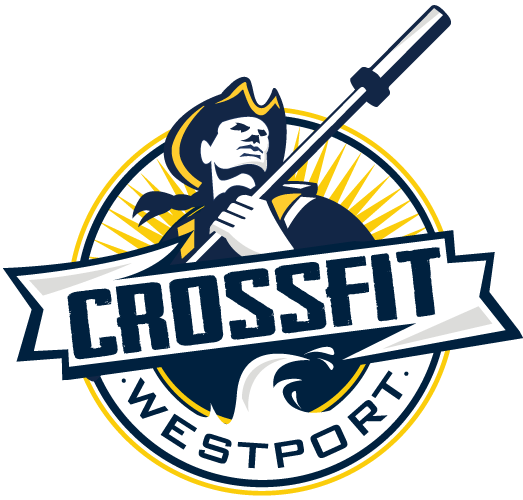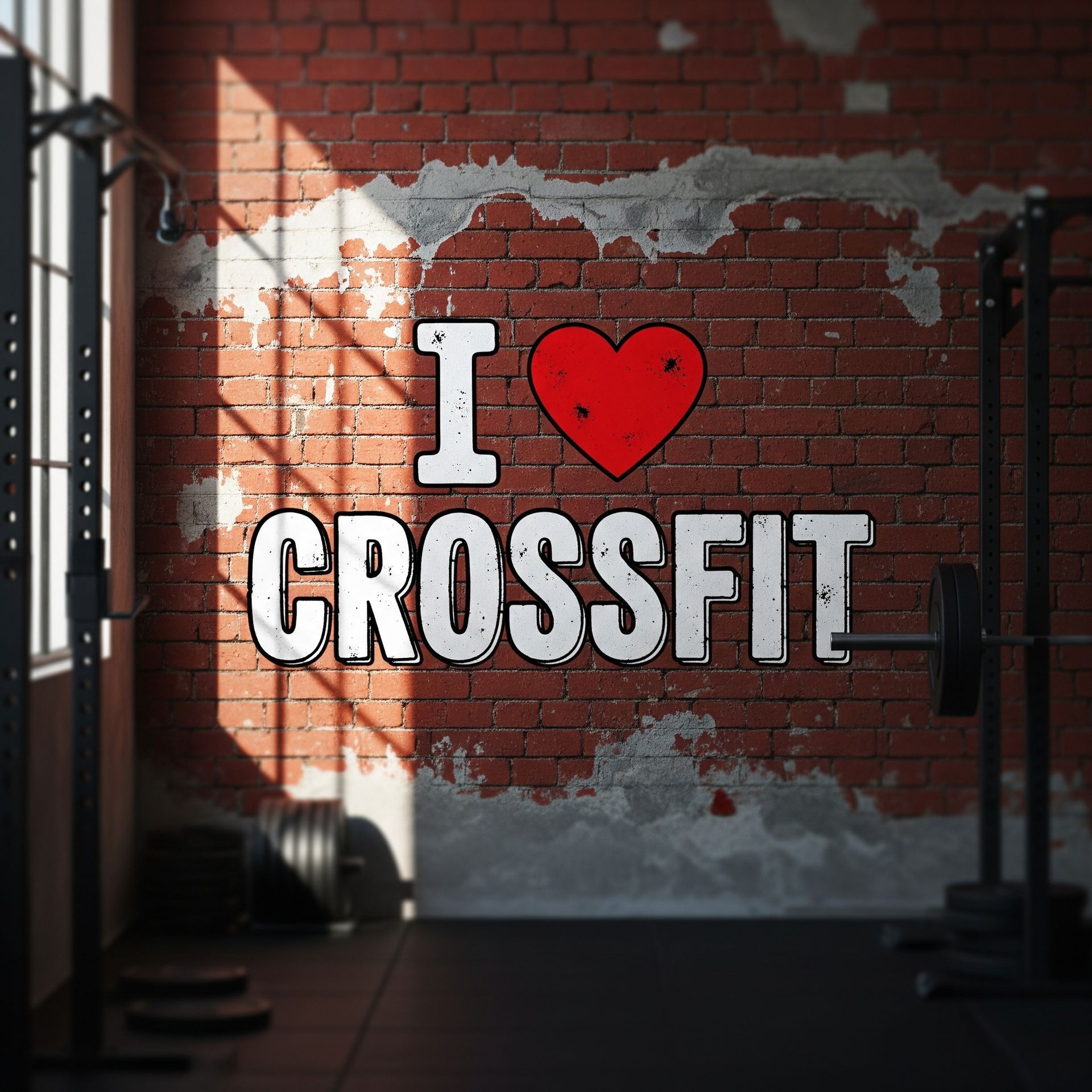Beginner's Guide: Crafting Your CrossFit Training Journey
Chris Douglass CF-L3 • September 7, 2024
a starter guide to a successful start
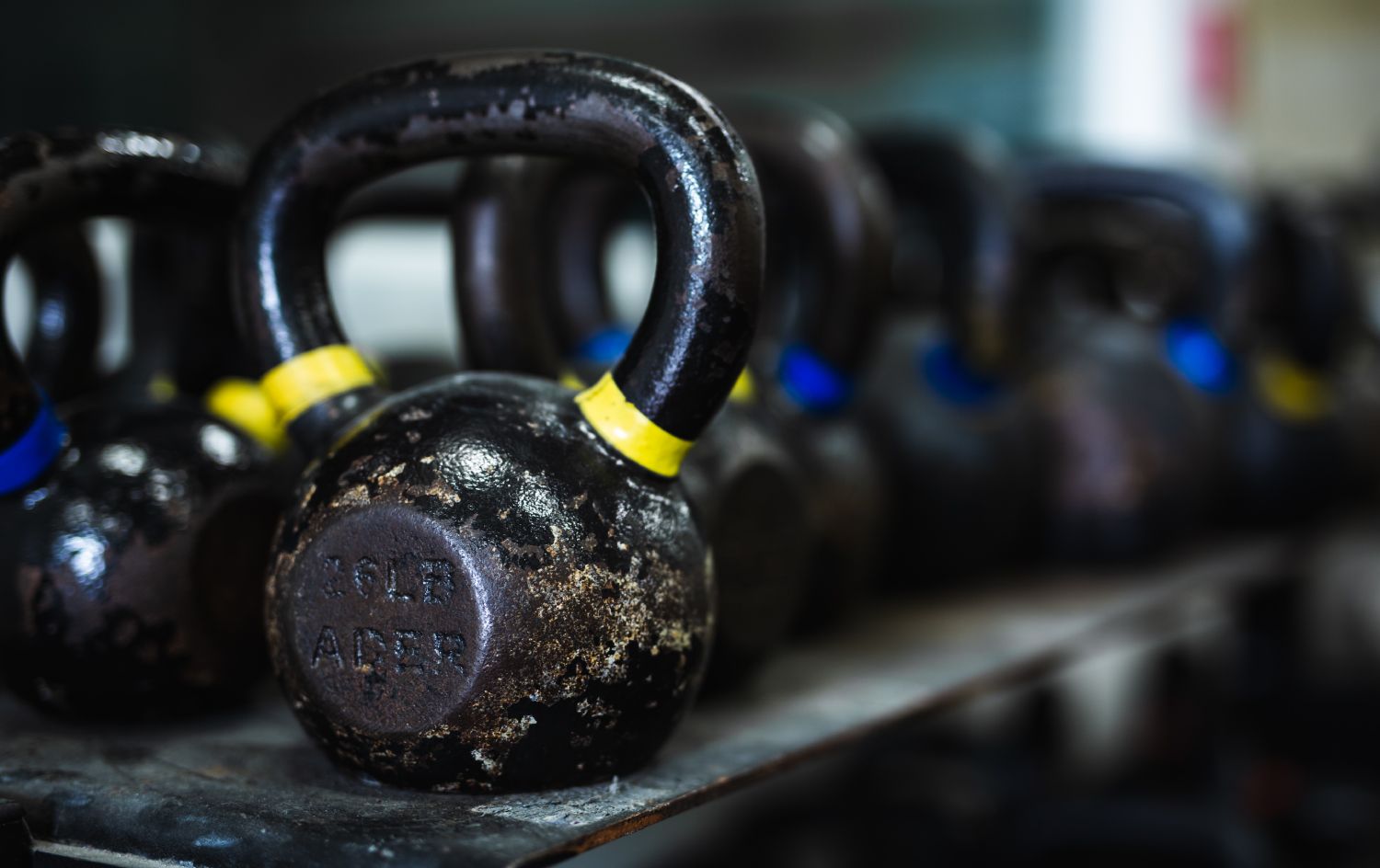
When you start a training regime there is a lot of excitement that athletes experience. Getting in the door is sometimes the hardest part, but once you have crossed that threshold a host of new questions start to surface. We will try to outline for you how to effectively scheduling your CrossFit workouts as a beginner for optimal performance and recovery.
Understanding CrossFit: The Basics and Benefits
CrossFit is a high-intensity fitness program that combines elements of weightlifting, cardiovascular training, and bodyweight exercises. It is designed to improve overall fitness by targeting various physical skills such as strength, endurance, flexibility, and agility. One of the key benefits of CrossFit is its scalability – workouts can be adjusted to suit any fitness level, making it an ideal choice for beginners.
The community aspect of CrossFit is another significant benefit. Training in a group setting fosters camaraderie and accountability, which can be incredibly motivating for newcomers. Additionally, the varied nature of CrossFit workouts ensures that you are constantly challenging your body in new ways, preventing workout boredom and promoting continual progress.
Determining Your Fitness Level and Goals
Before diving into a CrossFit routine, it's essential to assess your current fitness level and set realistic goals. If you are new to exercise or returning after a long hiatus, it's crucial to start slow to avoid injury or extreme soreness. The staff at CrossFit Westport is here to help you with that evaluation. We want to make sure that you are moving correctly and effectively before introducing levels of intensity (i.e. load & volume).
Setting clear, achievable goals will keep you motivated and focused. Whether you aim to lose weight, build muscle, increase endurance, or simply improve overall fitness, having specific targets will guide your training schedule and help you track your progress over time. Many of our athletes are training for life. They are working to have more energy to spend with their families and friends. Some are training to help them on the job (i.e. construction, first responders, care takers).
Crafting a Balanced CrossFit Weekly Schedule
As a beginner, it's important to strike a balance between training frequency and recovery. A typical starting point is to train three days a week, allowing for adequate rest days in between. For example, you might schedule workouts on Monday, Wednesday, and Friday, with rest or active recovery days on Tuesday, Thursday, and the weekend.
Each of our classes typically includes a warm-up, skill or strength training, the Workout of the Day (WOD), and a cool-down. As you become more comfortable with the routines and build your fitness base, you can gradually increase the number of training days to four or five per week, always listening to your body and adjusting as needed.
Incorporating Rest and Recovery in Your Routine
Rest and recovery are just as important as the workouts themselves. Recovery days allow your muscles to repair and grow stronger, reducing the risk of overtraining and injury. On rest days, consider activities like stretching, yoga, or light walking to promote blood flow and aid in recovery without putting additional stress on your body.
Proper nutrition, hydration, and sleep are also critical components of recovery. Ensure you are fueling your body with a balanced diet rich in protein, healthy fats, and carbohydrates, staying well-hydrated, and aiming for at least seven to eight hours of sleep per night. This will certainly help you in recovery and this will be noticeable in your workouts.
Monitoring Progress and Adjusting Your Schedule
Tracking your progress is essential to see how far you've come and to make informed adjustments to your training schedule. Some ideas are to keep a workout journal or use Wodify to log your workouts, noting details such as weights used, repetitions completed, and how you felt during each session.
By using the Wodify app to track your lifts and times you will be able to measure your fitness over time. Although our workouts are constantly varied, we will program benchmark workouts in to measure our members fitness progressions overtime.
Fitness is a journey and by being consistent you will see your improved levels of fitness both inside and outside of the box. If you have any questions or need help focusing in on your goals Libby or I are always open to meeting with you to help. You can book time here or email us chris@crossfitwestport.com
Previous WODs

Are You Sick or Fit? In CrossFit, we have a unique ability to quantify progress over time to see if we’re getting fitter as athletes. Back in October 2002, CrossFit published “What Is Fitness?” , providing a formal definition of fitness that emphasizes empirical measurement. The core idea: everything can be measured. That’s what we do each day in the box — we come in to lift heavy or finish a workout as fast as possible. Why? Because becoming a better athlete is becoming fitter. CrossFit defines fitness as work capacity across broad time and modal domains or in other words: how much power you can generate across many types of movements, modalities, and durations. The fitter the athlete, the more power across more domains. For example: Let's say that three months ago you did Fran ( 21-15-9 thrusters + pull-ups ) at 95 lbs. and finished in a time of 14:10. Today you retest and finish in 10:07 and that improvement is a clear signal: you got faster, you produced more power, and thus you got fitter. The Sickness–Wellness–Fitness Continuum But fitness isn’t only about WOD times. In “What Is Fitness? ”, CrossFit also references the sickness–wellness continuum . This model shows how fitness intersects with long-term health. Sickness (left side): Presence of one or more chronic diseases or conditions ( e.g. obesity, type 2 diabetes, hypertension, heart disease, kidney disease). Wellness (middle): Absence of disease, and health markers are within “normal” ranges. Fitness (right side): “Super-wellness” with optimal biomarkers, no chronic disease, and high performance capacity. Some of the key biomarkers you can track include: Fasting Blood Sugar / HbA1c Lipid profile (LDL, HDL, triglycerides) Inflammatory markers (e.g. C-reactive protein, CRP) Blood pressure and resting heart rate Body-fat percentage and lean body mass Bone density Hormones (testosterone, estrogen, progesterone, cortisol, thyroid) Waist circumference / waist-to-hip ratio It is really important in understanding where you lie on that continuum because it is a powerful tool for guiding training, nutrition, and lifestyle choices. Our goal at the gym isn’t just to help you move better in the box but it’s to help you live better outside of it. Tracking Biomarkers with Wearables & Lab Services Gone are the days when wearable tech meant only pedometers. The modern landscape is far more sophisticated and getting better everyday. If you're interested in better understanding your numbers I've listed below a few of the leading devices that help track health, stress, recovery, and sleep all of which contribute to your place on the continuum. Apple Watch Series 11: Apple’s latest smartwatch includes health features such as heart rate, ECG, blood oxygen, sleep tracking, and even hypertension notifications. Apple supports a feature called “Unlock with Apple Watch” for convenience. Note: while Apple holds patents for embedding Touch ID into future watches, as of now it is not a released feature. Oura Ring 4 : A sleek smart ring that monitors 30+ biometrics: heart rate, heart rate variability (HRV), temperature trends, sleep stages, and activity. Its “readiness” score gives daily guidance on how recovered you are. Recently, Oura launched Health Panels, allowing ring users to tie in over 50 blood biomarkers (cholesterol, glucose, kidney function, etc.) through lab testing, integrating wearable + lab data. WHOOP : A dedicated recovery and strain tracker that has become popular among performance athletes. WHOOP continuously measures sleep, strain, stress, and recovery to guide training decisions. WHOOP recently announced Advanced Labs where you can pay to have your biomarkers measures in lab visits. In head-to-head tests featured in Cosmopolitan , both Oura and WHOOP offer deep insights, but WHOOP often edges ahead in guiding how much strain is safe for a given day. These devices help turn raw data into actionable insight: when to push, when to recover, how stress or poor sleep might be affecting your performance. On the lab side, there are services like Function Health (and others) that let you order comprehensive panels (100+ biomarkers) and have results clinician-reviewed that is something many primary care physicians won’t provide proactively. These panels, often eligible for HSA/FSA reimbursement, can beautifully complement what your wearable is doing. Pulling It All Together: The Bigger Picture We all log PRs, WOD times, and weights. But what if we could see why we’re improving (or not), how recovery, sleep, stress, and internal health are impacting performance? If the ultimate goal is longevity and quality of life, then knowing exactly where you sit on the sickness–wellness–fitness continuum is powerful. Wearables + lab data help close that gap between training hard and training smart. We’re here to support you in that broader journey, not just your movements in the gym, but your performance in life. If you have questions about devices, lab services, or how to interpret your data, reach out to any of our coaches. We’ll walk that path with you.
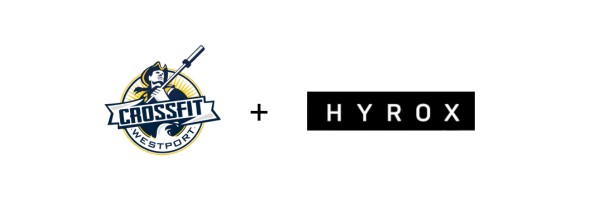
If you've been inside a fitness facility lately or even just scrolling through your social media feed chances are you've come across both HYROX and CrossFit or at least heard of them. These two training methods have exploded in popularity in recent years, each developing fiercely loyal communities and attracting athletes from all walks of life. While HYROX and CrossFit are often mentioned in the same breath, they’re actually quite different in structure, goals, and design. But here’s the best part: they’re also incredibly complementary to each other's athlete development. Whether you’re a dedicated CrossFitter looking to test your endurance, or a HYROX athlete wanting to build strength and power, these two worlds were made to support each other. In this article I want to break down the key differences and how combining both can unlock your full athletic potential. What Is CrossFit? CrossFit is a constantly varied, high-intensity functional training methodology designed to improve all ten general physical skills: cardiovascular endurance, stamina, strength, flexibility, power, speed, coordination, agility, balance, and accuracy. Our workouts change daily and often include a blend of: Weightlifting (Olympic lifts like cleans, snatches, squats) Gymnastics (pull-ups, ring-rows, muscle-ups, handstands) Metabolic conditioning (running, rowing, biking, jump rope) Bodyweight movements (air squats, burpees, push-ups, box jumps) The goal of CrossFit is about preparing you for the unknown and unknowable. Since we change the workouts and movements each day we train versatility, like in life you’ll never know what you are going to come up against until you wake up. A workout could be a five-minute sprint or a 40-minute grind. All of this is focused to increase your ability to workout over broad modal domains, simply put you become fitter and can tackle any obstacle that you face in a workout or in life. What Is HYROX? HYROX is a global fitness race designed around consistency and repeatability. Every HYROX competition is the same format: This includes: 1K run followed by 1 functional workout station and you repeat that 8 times. Those 8 stations include: Ski Erg Sled Push Sled Pull Burpee Broad Jumps Row Farmers Carry Sandbag Lunges Wall Balls Unlike CrossFit, HYROX isn’t about surprise or complexity. It’s about pacing, engine, and mental grit over a 60-90 minute period. It rewards athletes who can manage fatigue, stay efficient, and hold steady output under pressure. Why They Support Each Other Though different, CrossFit and HYROX build incredibly compatible athletic skills. In fact, training both can elevate your performance across the board. 1. CrossFit builds HYROX strength and explosiveness. Those sleds and wall balls? They’re no joke. The power developed through Olympic lifting and functional strength training in CrossFit transfers directly into the muscle endurance and drive needed for HYROX races. These exercises both show up in CrossFit workouts and building that capacity will help you on the race course. 2. HYROX develops CrossFit engine and mental grit. Many CrossFit athletes hit a wall in longer workouts or struggle with pacing. Training for a HYROX race requires sustained effort and consistent output — skills that dramatically improve a CrossFitter’s ability to perform in Hero WODs, qualifiers, or any longer METCON. 3. Both require movement efficiency. Whether it’s kipping a pull-up or grinding through a 1K row, movement quality under fatigue matters. Athletes who do both learn how to move better, conserve energy, and recover faster. 4. Community + Competition Both sports are deeply rooted in camaraderie and personal growth. The shared suffering, cheering on your peers, and celebrating PRs — it’s the same energy. If you love the CrossFit vibe, you’ll find the same fire at a HYROX race. And if you’re a HYROX athlete who’s never touched a barbell? CrossFit can take your game to the next level. Final Thoughts CrossFit and HYROX aren’t rivals they’re allies in helping build healthier people and communities. At CrossFit Westport, we believe in building well-rounded members who are strong, conditioned, and confident in any environment. That’s why we are a CrossFit and HYROX affiliate that provide dedicated HYROX programming alongside our CrossFit classes. Whether you're stepping into your first WOD or preparing for your first HYROX race, we’ve got the tools, coaching, and community to help you thrive. Ready to explore both worlds? Let’s train.
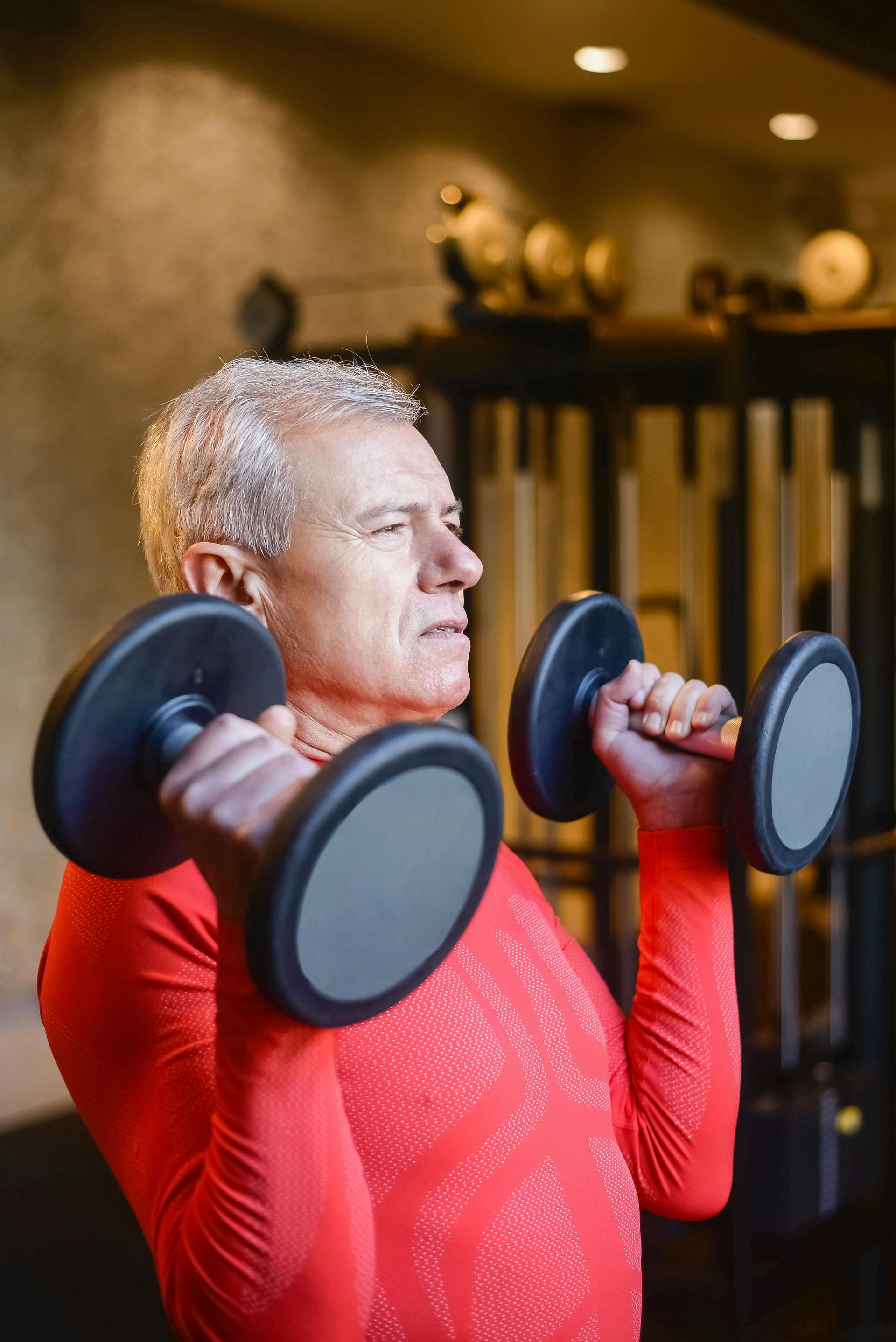
Aging is inevitable — but losing strength, mobility, and energy doesn’t have to be. At CrossFit Westport, we work with people of all ages, and we’ve seen firsthand how strength training can transform the aging process. Whether you’re in your 40s or your 70s, incorporating resistance and functional movement training can help you feel better, move better, and live longer — all while boosting your confidence. Let’s break down exactly why strength training matters as you age, how it benefits your body and mind, and why CrossFit is the perfect solution to age gracefully, powerfully, and purposefully. Understanding the Aging Process As we get older, several physiological changes start to occur: Sarcopenia: the natural loss of muscle mass and strength. Decreased bone density, leading to increased risk of fractures and osteoporosis. Slower metabolism, which can lead to weight gain and decreased energy. Reduced mobility, balance, and coordination, increasing the risk of falls. Mental decline, including reduced cognitive function and elevated stress or depression. While these changes are common, they are not irreversible . In fact, research shows that consistent strength training is one of the most effective ways to combat the effects of aging. The Top Benefits of Strength Training for Older Adults 1. Rebuild and Maintain Muscle Mass: Muscle mass naturally declines with age — but strength training slows and even reverses that decline. By performing functional compound movements ( like squats, deadlifts, and presses ), you stimulate your muscles to adapt and grow stronger, even decades after your "prime." CrossFit workouts are built around these foundational movements, ensuring that you're not just building muscle but you're building functional strength that supports your everyday life, which is important as we age and care for others and ourselves. 2. Increase Bone Density and Joint Health: We know that as we age, our bones become more fragile. Strength training, particularly with weight-bearing movements, stimulates bone growth and improves joint stability, helping reduce the risk of osteoporosis and arthritis-related pain. At CrossFit Westport, our programming helps build resilient joints and bones through carefully scaled weightlifting and mobility work. We meet people where they are in their fitness journeys-whether you've been lifting for years or you've never touched a weight we will help you feel comfortable and confident in making it effective and doing it right. 3. Boost Your Metabolism and Burn Fat: Strength training increases lean muscle mass, which naturally raises your resting metabolic rate. This means your body burns more calories even when you’re not working out making it easier to manage your weight and energy levels. Combined with high-intensity training elements (like in CrossFit), strength training becomes a powerful tool for fat loss and metabolic health. 4. Improve Cognitive Function and Mental Health: Multiple studies show that resistance training has a positive impact on brain function, including memory, focus, and problem-solving. Plus, the endorphins released during a good workout are a proven mood-booster, reducing the risk of depression and anxiety. We have seen it first hand that t he community environment at CrossFit Westport also fosters social interaction and support — two critical components of mental and emotional well-being. 5. Enhance Balance, Coordination, and Independence: Falls are a serious concern for aging adults, but they’re not inevitable. Strength training improves proprioception ( your sense of body position ) and activates stabilizing muscles, reducing the risk of falls and injuries. One of the common areas where people fall at home is when shifting from hardwood to carpet. For those that lose strength in their hip flexors and their ability to lift their legs when walking is when these incident occur most. Our coaches at CrossFit Westport prioritize safe movement patterns and balance-focused training, helping you stay agile, independent, and confident. Why CrossFit Is Perfect for Strength Training at Any Age? There’s a myth that CrossFit is only for elite athletes or the young and fit. That couldn’t be further from the truth. At CrossFit Westport, our approach is simple: We meet you where you are. We modify workouts to your needs. We focus on long-term progress and health, not quick fixes. Our coaches are experienced in working with adults over 40, 50, and beyond creating customized training plans that focus on safety, consistency, and confidence. CrossFit Benefits for Older Adults: ✔️ Scalable intensity: Every movement and workout can be modified for your ability level. ✔️ Structured programming: You’ll follow a proven training plan designed to maximize strength, mobility, and cardiovascular health. ✔️ Community-driven : You’ll train alongside people who inspire, encourage, and support each other — which keeps motivation high. ✔️ Coaching support: Every class is led by a certified coach to ensure proper form, safety, and results. How to Start Strength Training Today — No Experience Needed Starting is the hardest part — but we make it easy. Here's what to expect when you join CrossFit Westport: Free Intro Consultation: Sit down with with us to discuss your goals, concerns, and training history. Foundations Program: Learn the basics of strength training and CrossFit in a safe, supportive setting. Personalized Progression: Every workout is tailored to your needs — so you’re never overwhelmed or left behind. Conclusion: You’re Never Too Old to Get Strong Whether you're 40 or 70, it’s never too late to take control of your health and build strength for life. We believe aging doesn’t have to mean slowing down. With proper training, support, and consistency, your best years of fitness are still ahead of you. 🔥 Ready to Get Started? 👉 Book Your Free Consultation Now 👉 Visit CrossFit Westport at 19 Willard Rd, Norwalk, CT 06851 👉Give us a call at (203) 526-3021 or email us at info@crossfitwestport.com 👉 Experience the power of strength training at any age

There are Gym Rules? When I was growing up and going to the gym, there were always unspoken rules. You learned them from the ‘old-timers’ and they were basic things like don’t stand in front of someone in the mirror, put your weights away, clean your bench or machine after training, etc. There are similar etiquette rules here in CrossFit. We know that it is more than just a workout— it’s a community built on hard work, respect, and support. Now, whether you’re new to the gym or a seasoned athlete, it sometimes depends on where you started and if they had any ‘rules’ or proper etiquette to ensure everyone has a great experience. So I wanted to put down some of the things I’ve learned over my almost two-decade experience with CrossFit to share with you. 1. Show Up on Time (or Early!) This is a must. Why? Well, CrossFit classes are structured, and coaches have a lesson plan and logistics to take in account warm-ups, skill development, and the WOD. Arriving late disrupts the flow and can throw off the class dynamic. Now, if you’re running late that’s fine… it happens, but slip in quietly and the coach will catch up quickly during the warmup or throughout the sessions. The key is don’t make it a habit. Why? Well, it’s a sign of respect for the coaches and your fellow athletes. I would imagine that you wouldn’t show up late to a presentation, meeting at work or 1:1 with your boss, if you did it would be considered disrespectful and your boss would probably fire you ( we’re not going to fire you ), look life happens, but make a point to get there on time it’s the one thing we all can control in our life. ✅ Best Practice: Aim to arrive 5-10 minutes early to check in, roll out and be ready for the Whiteboard Brief from there the coaches will tell you where to go next. 2. Respect the Coach & Pay Attention Your coach is there to help you move safely and efficiently. Whether they’re explaining the workout, demonstrating a movement, or correcting your form, give them your full attention. We want to make sure that you understand the stimulus for the day ( and yes, there is a lot of design and planning involved in what we do ) and how to find appropriate scaling options to preserve that stimulus. ❌ Don’t: Talk over the coach, do your own thing during instruction, or ignore movement standards. ✅ Do : Listen, ask questions, and be coachable. ✅ Do: Wait for the appropriate time to ask questions and for scaling options. 3. Clean Up After Yourself Your workout isn’t finished until your equipment is put away! Leaving weights, chalk, or sweat puddles behind is really inconsiderate to the next class and coaches. So make sure you: ✅ Wipe down your equipment (bars, rowers, benches). ✅ Return plates, dumbbells, and gear to their proper place. ✅ Manage your chalk use—nobody likes a “chalk explosion” on the floor. ❌ Don’t: Use wipes on the barbells to remove the chalk , make sure you use the wire brushes to get the chalk off, unless you bled which we need to spray and disinfect (otherwise they will rust). 4. Don’t Clean Up While Others Are Still Working Just because you’ve finished doesn’t mean everyone else has. It can be distracting and even demoralizing when athletes are still grinding through the WOD while others are loudly cleaning up around them. Remember, you wouldn’t go to a friends house for dinner, eat as fast as you can, then proceed to put your dishes in the sink and walk out of the house while they are still eating. That is kind of what you’re doing to your fellow athletes when you clean up while others are still working. Best practices: ✅ Wait until the last person finishes before putting away your gear. ✅ Cheer on your fellow athletes instead of packing up early. ✅ If you absolutely need to clean up, do it quietly and without disrupting the class flow. CrossFit is about community, and nothing embodies that more than supporting others until the very last rep. What makes CrossFit special is the person that finishes last gets the loudest applause. 5. Be Aware of Your Surroundings CrossFit workouts often involve barbells, kettlebells, and high-speed movement, so spatial awareness is key. ✅ Check before you walk behind someone lifting—they might be mid-squat or deadlift. ✅ Give others space when setting up for box jumps, rope climbs, or Olympic lifts. ✅ Don’t drop empty barbells—it damages the equipment and makes you that person. 6. Encourage, But Don’t Coach CrossFit thrives on community support, but there’s a fine line between motivation and overstepping. Unless you’re a coach, avoid giving unsolicited advice. ✅ Do: Cheer people on, give high-fives, and celebrate wins. ❌ Don’t: Critique someone’s form or tell them what they should do differently. It’s ok to share some ideas, but let the coach help. It can be confusing and overwhelming especially when you’re new. 7. Scale Smart, Not Stubbornly CrossFit is for all fitness levels, and scaling is key to progressing safely. If a coach suggests a modification, trust them! We are trying to help you preserve the stimulus and stay safe ( more to come in a future blog ). ✅ Know your limits—scaling isn’t a weakness, it’s smart training (scale for life). ✅ Don’t ego-lift—safety and form come first. 8. Dropping Barbells & Weights from Overhead (Unless Necessary) We get it—sometimes a lift is heavy, and you need to drop it. But not every lift needs to be slammed down. Dropping from overhead too often can damage the barbell, plates and your fellow athletes. The big rule of thumb is if you need to drop it make sure your hands are over the bar to prevent it from bouncing around. If it can be controlled and light--bring it down under control. The same goes for dumbbells, you should be able to return them to the floor under control ( even from hip height) unless it is absolutely necessary to drop. Best Practices: ✅ Lower the bar (dumbbells & kettlebells) under control when possible. ✅ If you must drop, make sure the space around you is clear. 9. Respect the Community & Culture CrossFit is about working hard together. A positive gym culture means respecting everyone, whether they’re lifting double your weight or just starting their fitness journey. When you travel to another CrossFit gym, I always think about it as if I'm visiting someone's home for the first time. I ask the coaches and members regarding their 'house rules'. I want to make sure that I'm respecting their space, equipment, and gym culture ( not to mention I always want to be invited back). Also for new members remember your first day. It can be so overwhelming coming into a gym for the first time. Weights are dropping, the music is loud and you're surrounded by a close knit community. So some best practices at home or away. ✅ Introduce yourself. See a new member say hi and let them know you're hear to help ✅ Avoid negative talk about other athletes or the programming. If you have constructive feedback pull the coach to the side or seek to understand the larger goal. ✅ Support everyone, no matter their skill level. When traveling to another box: Make sure you understand their policies. Some require you to sign-up before you show up. So inquire before heading over to a new gym for the first time. Here are some other tips: ✅ Ask: is it ok to drop weights here? ✅ Be Supportive of Everyone ✅Have an open mind to their coaching cues to learn from another perspective. ✅ Look for cool cultural or experiences you saw and share that with your local gym ✅ PAY FOR YOUR DROP-IN: You wouldn't walk into a business not expecting to pay for their goods m Support their Business by buying a shirt or a drink! ✅ Thank the Coaches and Members for Inviting You Into Their Home! 10. Keep the Post-WOD Recovery in Check It’s fine to collapse on the floor after a tough workout, but be mindful of your surroundings. If the next class is coming in or others are finishing their WOD, clear space and avoid blocking equipment ( just crawl to the corner, that's my go to ). 11. Have Fun & Be a Good Teammate! At the end of the day, CrossFit is about self-improvement, community, and having fun. Bring good energy, work hard, and celebrate progress—yours and others'. 👍 High-fives encouraged 💪 Work hard, stay humble 🔥 Support your fellow athletes Final Thoughts Good gym etiquette makes the CrossFit experience better for everyone. By following these simple guidelines, you’ll not only earn respect in the gym but also contribute to a stronger, more supportive community. If you ever have a question, just ask! No one should expect to know what you're experiences have been and we are happy to help you! Did we miss any CrossFit etiquette rules? Or are there others that you abide by? If so, drop your thoughts in the comments below!
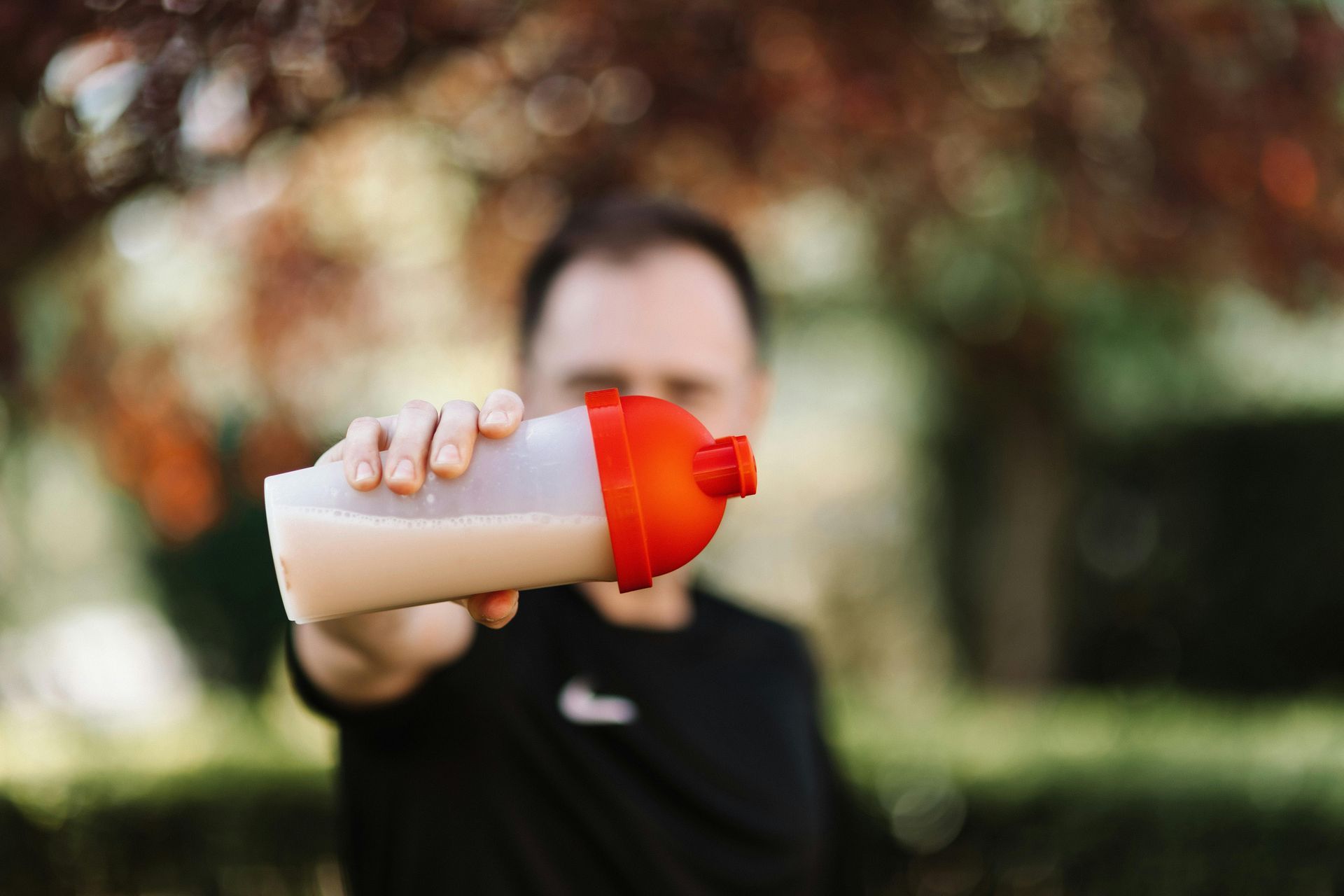
Let’s talk about supplementation and how it can support you as an athlete. First, what exactly is supplementation? Simply put, it’s the practice of adding more nutrients to your diet to help meet your body’s demands. Ideally, about 90% of your nutrients should come from whole foods. However, with the intensity of training, busy work schedules, and family commitments, it’s not always easy to get enough of what we need—especially protein. Why Protein? When you work out, your muscles experience microscopic tears (microtears) which trigger a repair process, leading to muscle growth also known as hypertrophy. What happens is when the muscle repairs itself by increasing the size and number of muscle fibers within the muscle, making them stronger and more capable of handling future stress. During this process increased blood flows to the muscle to deliver nutrients for repair and adaptation. This is where Protein comes to play. Protein is the building block of muscle. During digestion, protein is broken down into amino acids, which are essential for muscle repair and growth. There are 20 amino acids in total, and while the body naturally produces 11 of them, the remaining nine—known as essential amino acids—must come from our diet. These essential amino acids are found in high-quality protein sources like meat, eggs, and dairy. According to a Harvard and the Mayo Clinic research, athletes should aim to consume .7 to 1.2 grams of protein per pound of lean body mass per day . This varies based on activity, but as a consistent CrossFit Athlete you should be aiming in around this area. But question comes up what does that look like in real terms? For example, if you weigh 200 lbs. with 20% body fat, your lean body mass is 160 lbs. That means you’d need 112-192 grams of protein per day. To get that from whole food alone, you’d need to eat nearly 1.5-2 lbs. of meat daily (assuming I was just eating chicken alone ) and that’s hard to do and quite stressful! Where Supplementation Helps This is where protein supplementation becomes useful. High-quality protein powders typically provide 25-30 grams of protein per serving . Because these proteins are in liquid form, they are more easily absorbed—up to **90% or more**—making them a convenient and efficient way to meet your daily protein needs. This also enters the bloodstream faster and delivers the nutrients needed to aid in repair and recovery. Types of Protein Supplements: Whey vs. Casein Protein There are many types of protein supplements, but two of the most effective are whey and casein: Whey Protein: Fast-digesting, making it ideal for post-workout recovery. Your body absorbs whey quickly, helping to kickstart muscle repair and growth. Casein Protein: Slow-digesting, providing a steady release of amino acids over several hours. This makes it great for nighttime recovery, ensuring your muscles are fueled while you sleep. Both whey and casein are byproducts of cheese-making process (hence the nursery rhyme: *Little Miss Muffet sat on her tuffet, eating her curds and whey*—or maybe she was just trying to hit her protein goals! ). When Should an Athlete Consume Whey vs. Casein Protein? Both whey and casein serve distinct purposes in an athlete’s nutrition plan. Knowing when to use each can help maximize muscle growth, recovery, and overall performance. Here’s how to strategically incorporate them into your routine: When to Take Whey Protein (Fast-Digesting) Whey protein is quickly absorbed, making it ideal for times when your body needs rapid protein delivery. Post-Workout Recovery (Best Time to Take Whey): After a tough training session, your muscles are in a catabolic state (breaking down muscle tissue for energy). Consuming 25-30g of whey protein within 30-60 minutes post-workout helps jumpstart muscle protein synthesis, repairing muscle fibers and promoting growth. Pairing whey with fast-digesting carbs (like a banana or honey) can further enhance muscle recovery by replenishing glycogen stores. Pre-Workout (Optional, If You Haven’t Eaten in Hours): If you train first thing in the morning or haven’t eaten in a while, a small whey protein shake (15-20g) 30-60 minutes before your workout can provide amino acids for muscle preservation and fuel. This is especially useful for fasted workouts to prevent muscle breakdown. Mid-Day Snack or Meal Replacement: If you’re on-the-go and don’t have time for a full meal, a whey protein shake with some added healthy fats ( like peanut butter ) and fiber ( like chia seeds ) can keep you satisfied without slowing digestion. When to Take Casein Protein (Slow-Digesting) Casein is absorbed much more slowly than whey, making it ideal for periods when your body will go several hours without food. Before Bed (Best Time for Casein): Your body goes through an overnight fasting period, and without protein intake, muscle breakdown can occur. Casein digests over 6-8 hours, providing a steady stream of amino acids while you sleep. A casein protein shake or cottage cheese before bed can improve overnight muscle recovery and growth. Long Periods Without Eating (Work, Travel, Meetings, etc.): If you know you’ll be without food for several hours, a casein shake or high-casein food ( like Greek yogurt or cheese ) can help keep you full and prevent muscle breakdown. Great for long flights, back-to-back meetings, or endurance athletes training for long hours. Mid-Day Snack for Sustained Satiety: Casein is also a great option as a mid-day snack to help curb hunger between meals. Since it digests slowly, it helps regulate blood sugar levels and keeps energy levels steady. Can You Take Both Whey and Casein? Absolutely! Many athletes combine whey and casein for optimal results. ✅ Example Routine: Morning Pre-Workout: Whey protein shake (if fasted) Post-Workout: Whey protein + fast-digesting carbs Mid-Day ( If Needed ) : Casein-based snack (Greek yogurt, cottage cheese) Before Bed: Casein shake or meal for overnight muscle repair In Summary While whole food sources should always be the foundation of your nutrition, protein supplementation can help fill the gaps when needed. If you struggle to hit your daily protein intake, adding a high-quality whey or casein supplement can be a game-changer in optimizing muscle recovery, performance, and overall health. If you have any questions or need support let us know and we’d be happy to help provide recommendations that meets ( or meats, pun intended ) your needs.

What is CrossFit? CrossFit is a high-intensity, functional fitness program that combines weightlifting, gymnastics, and cardiovascular conditioning. Designed for all fitness levels, it focuses on constantly varied movements performed at high intensity, making workouts both challenging and exciting. The Top Benefits of CrossFit 1. Full-Body Strength & Conditioning Unlike traditional gym routines that isolate muscle groups, CrossFit incorporates compound movements like squats, deadlifts, and pull-ups. These exercises improve: ✅ Strength ✅ Endurance ✅ Mobility 2. Fast and Effective Workouts With one-hour classes, CrossFit is perfect for busy professionals, parents, and athletes who want maximum results in minimal time. Workouts are designed to: 🔥 Burn fat 🔥 Build muscle 🔥 Boost metabolism 3. Functional Fitness for Everyday Life CrossFit trains your body for real-world movements, such as lifting, pushing, and pulling. This leads to: ✔️ Improved posture ✔️ Reduced risk of injury ✔️ Better overall mobility 4. Weight Loss & Fat Burning CrossFit’s high-intensity interval training (HIIT) approach torches calories long after your workout. With a mix of strength training and cardio, you can expect: 💪 Increased muscle tone 🔥 Faster fat loss ⚡ Higher metabolism 5. A Strong, Supportive Community One of the biggest reasons people stick with CrossFit is the community atmosphere. Unlike a typical gym, CrossFit offers: 🤝 Motivation from fellow members 🏆 Friendly competition 🎯 Accountability to stay on track 6. Scalable for All Fitness Levels Worried that CrossFit is too intense? Every workout can be modified to match your ability. Whether you’re a beginner or an elite athlete, workouts are tailored to help you progress at your own pace. 7. Mental Toughness & Discipline CrossFit is more than just physical training—it builds resilience, confidence, and mental strength. Overcoming tough workouts teaches you to push past limits, both in and out of the gym. Why Join a CrossFit Gym? Unlike big-box gyms, a CrossFit gym (or "box") provides: ✅ Expert Coaching – Professional trainers guide you through movements and correct form. ✅ Structured Programming – Every class is planned for progress and variety. ✅ Fun & Engaging Workouts – Say goodbye to boring treadmill sessions! Getting Started with CrossFit Westport If you're ready to transform your fitness and experience a workout that delivers real results, come try a class at [Your Gym Name]! We offer: ✔️ Beginner-friendly classes ✔️ Personalized coaching ✔️ A supportive, welcoming community 📅 Sign up for a free trial today! Click [here] to book your first class or just email me at Chris@crossfitwestport.com.
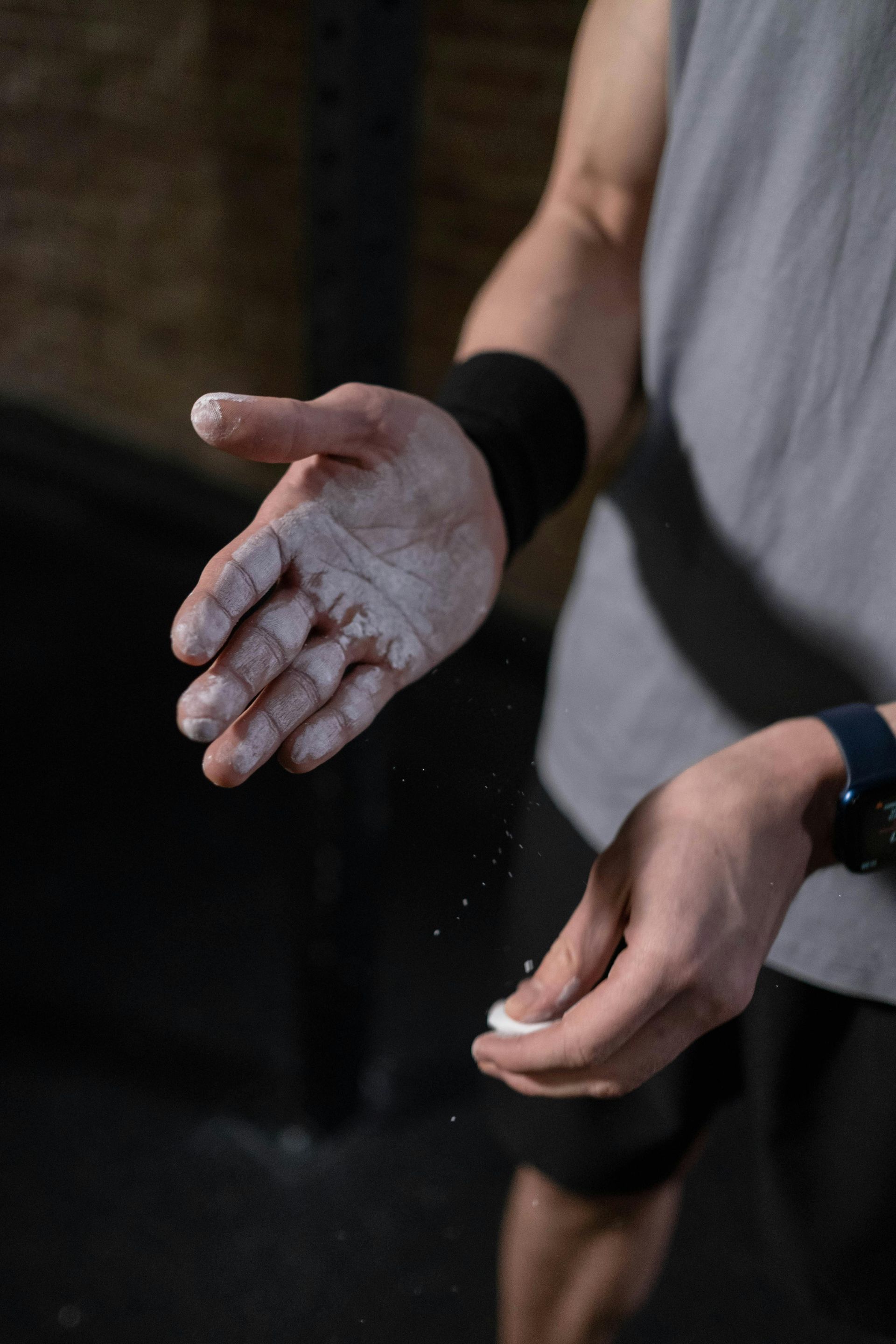
CrossFit is all about pushing your limits—lifting heavy, swinging from the rig, and grinding through those high-intensity workouts. But one thing every CrossFitter knows all too well is how much wear and tear these activities put on your hands . The dreaded torn calluses, blisters, and raw palms are part of the game, but with proper care, you can keep your hands in top shape and minimize painful setbacks. In this blog, I'm going to cover the essentials of hand care for you, from preventing tears to treating sore hands after a tough workout. Why Hand Care is Important in CrossFit Your hands are your primary connection to the barbell, kettlebell, rings, and pull-up bar. Without healthy hands, your grip strength suffers, and your performance can take a hit. Torn skin can not only be painful but also prevent you from training effectively for days or even weeks. Proper hand care helps: Prevent injuries: Reducing the chance of rips and tears keeps you in the gym and on track with your goals. Improve grip: Healthy hands mean a stronger grip, which directly improves your performance on lifts, pull-ups, and gymnastic movements. Enhance hygiene: Open wounds from hand tears can lead to infections, especially in a gym setting. Keeping your hands well-maintained reduces the risk. 1. Build Your Calluses, Don’t Let Them Tear Calluses are your body’s natural response to the friction caused by lifting and pulling. They’re a good thing, but if left untreated, calluses can grow too thick and eventually rip off during a workout. Tip: Regularly file or shave down your calluses. Using a pumice stone, callus file, or hand care tool, gently smooth out the thick areas of skin on your palms. Do this when your hands are dry to avoid making them too thin. Pro Tip: Aim to maintain smooth, even calluses rather than letting them build up into thick patches. This balance helps protect your hands without putting them at risk for tearing. 2. Moisturize Your Hands While it may seem counterintuitive, keeping your hands moisturized is key to maintaining their health. Dry, cracked skin is more likely to tear under pressure, so regular hydration is crucial. Tip: Use a hand balm or lotion at night to keep your skin soft and pliable. Look for products specifically designed for athletes, which tend to absorb quickly and offer long-lasting moisture. 3.Grip-up for Protection During high-rep bar work, kettlebell swings, or gymnastic movements, you can reduce friction and protect your hands by using grips. Tip: Learn how to properly tape your hands or invest in a pair of hand grips designed for CrossFit. Grips can provide an extra layer of protection without sacrificing your grip on the bar. We have a partnership with Victory Grips and a staff member can help you measure the right grip your hands. Also, taping around your thumbs or palms can also reduce friction in high-wear areas. Pro Tip: If you’re using grips, make sure they’re broken in and comfortable before a big workout. When you first get them they can be a little slippery on the bars. Depending on the type of grip you can get them damp and use some chalk to help break them in. 4. Keep Your Hands Clean After a tough WOD, your hands are likely covered in chalk, sweat, and potentially even small cuts or blisters. Keeping your hands clean and free of dirt and germs is crucial for preventing infection and helping them heal. Tip: Wash your hands thoroughly with soap and water after every workout. If you have any open cuts or tears, clean them with an antiseptic and cover them to avoid bacteria. Pro Tip: In the event of a tear we have a First Aid kit on the wall with bandages, antiseptic wipes, and tape. Let a coach know and they will help you treat any small injuries on the spot and get back to your workout quickly. 5. Treat Hand Tears Right Away Even with the best care, tears can still happen. If you rip a callus or blister during a workout, it’s important to treat it properly so you can heal quickly and prevent infection. Tip: If your hand tears, wash the area immediately with warm water and soap. Gently trim away any loose skin using sterilized scissors. Apply a wound ointment like Neosporin and Polysporin and cover the tear with a breathable bandage. You don't want the wound to dry and continue to crack, it will just take longer to heal. Pro Tip: Some people swear by products like liquid bandages to cover and protect small hand tears, allowing them to heal while still being able to use their hands for lighter workouts. 6. Strengthen Your Grip One of the best ways to prevent hand injuries is by improving your grip strength. Stronger hands are better equipped to handle the friction and pressure from heavy lifts and high-rep movements. Tip: Incorporate grip-strengthening exercises like farmer’s carries, dead hangs, and fat bar training into your routine. This helps toughen your hands and fingers while reducing the strain on your skin. Pro Tip: Chalk is great for improving your grip, but don’t rely on it for every movement . Use chalk sparingly and practice training without it to build natural grip strength. Chalk will dry out your hands and the combination of dry skin, friction, and pull-up/barbell work is a recipe for ripping. As a result, hand care is a crucial part of your CrossFit training, just like mobility work and recovery. By maintaining healthy hands, you’ll be able to train more consistently and perform better without the setback of painful tears or injuries. Remember to build your calluses carefully, moisturize regularly, grip up when needed, and treat any injuries promptly. Taking care of your hands today will pay off tomorrow when you’re crushing your killer workout's pain-free and feeling strong. 💪

In 2002, the CrossFit Journal published " What is Fitness" . In that article is discussed the Theoretical Hierarchy of Development that is theoretical hierarchy for the development of an athlete. The foundation of this hierarchy starts with nutrition and in this article we will touch on some of the basic needs of an athlete when it comes to fueling. Fueling the CrossFit Body: Macronutrients Explained Macronutrients—proteins, carbohydrates, and fats—are the foundational elements that fuel the CrossFit body. Understanding their roles and how to balance them can make a significant difference in athletic performance. Proteins are crucial for muscle repair and growth, carbohydrates provide the energy needed for high-intensity workouts, and fats support overall energy levels and cellular functions. For CrossFit athletes, a balanced intake of these macronutrients is essential. Ensuring you consume enough protein helps in muscle recovery and growth. Carbs are vital for replenishing glycogen stores, which get depleted during intense workouts. Healthy fats are equally important, as they help in hormone production and energy maintenance during prolonged activities. The Role of Micronutrients in Enhancing Athletic Performance While macronutrients are essential, micronutrients—vitamins and minerals—play a critical role in enhancing athletic performance. These nutrients support various bodily functions, including energy production, bone health, and immune system support. Deficiencies in micronutrients can lead to decreased performance and increased risk of injury. Key micronutrients for CrossFit athletes include Vitamin D, which supports bone health and muscle function, and B vitamins, which are vital for energy production. Minerals like magnesium and zinc are also crucial, as they play roles in muscle function, recovery, and immune support. Ensuring a diet rich in fruits, vegetables, and lean proteins can help meet these micronutrient needs. If you are consuming a variety of whole foods in your diet you are most likely going to hit your daily needs. Pre and Post-Workout Nutrition Tips for CrossFit Athletes One question I get a lot from athletes, is what should I eat before I come and what should I eat after a workout? It's a great question because what you eat before and after your workout can significantly impact your performance and recovery. Pre-workout nutrition should focus on providing quick, easily digestible energy. Consuming a meal rich in carbohydrates and moderate in protein about 1-2 hours before your workout can help optimize your performance. The caveat here is you want to avoid foods that will give you any gastrointestinal distress during the workout, so you might want to consume something that will give you energy, but not an upset stomach. This could be a banana, toast, and peanut butter or protein drink with a carbohydrate supplement. Post-workout nutrition is equally important for recovery. Consuming a meal or snack that includes protein and carbohydrates within 30 minutes to an hour after your workout can help replenish glycogen stores and repair muscle tissue. The recovery window as to when to eat can range from 30 minutes-to-four hours, but listen to your body. If your stomach is unsettled then eat when you are back to normal. Some options to consider post-workout can be like a protein shake or chicken, quinoa bowl and maybe some avocado to meet these nutritional needs. Tailoring Your Diet to Your CrossFit Goals Every CrossFit athlete has unique goals, whether it's building muscle, losing fat, or enhancing overall performance. Tailoring your diet to meet these specific goals can help you achieve them more efficiently. For muscle gain, focus on a higher protein intake along with sufficient calories to support muscle growth. For fat loss, a balanced diet with a slight calorie deficit, coupled with high-intensity workouts, can help you shed excess fat without sacrificing muscle mass. It's also essential to adjust your macronutrient ratios based on your training intensity and volume. High-intensity training days may require more carbohydrates for energy, while rest days might benefit from a higher protein and fat intake for recovery. If you would like more personalized guidance to help you align your diet with your CrossFit goals email me at chris@crossfitwestport.com and we can develop a plan specific to you. Author Chris Douglass, Owner CrossFit Westport L-3 CrossFit and L1 Renaissance Periodization Nutrition Coach
Stop missing out
Lorem ipsum dolor sit amet, consectetur adipiscing elit, sed do eiusmod tempor incididunt ut labore et dolore magna aliqua.
